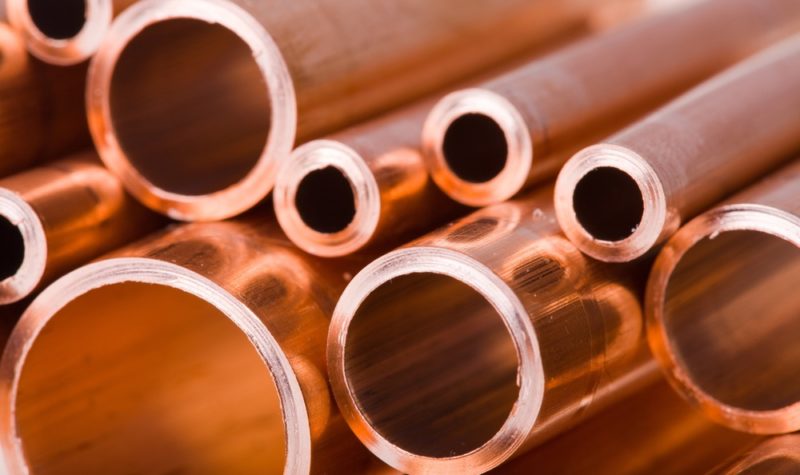Copper: Green energy revolution could boost price to as much as $15,000/tonne

There’s been a massive upswing in metal prices as the global economy emerges from the Covid pandemic and spending increases, but Emma Portier is particularly excited about copper because of the crucial role it has to play in the shift to green energy.
Traditionally, the fortunes of this ubiquitous base metal – used in everything from televisions to washing machines to electric vehicles – have been largely tied to economic cycles. That it’s used so widely in building construction has linked its price closely to housing demand for example.
With unleashed pent-up pandemic demand, copper prices have jumped more than 20% in the year to date to $10,159.5 per tonne and have reached an all-time high. At the same time, we have seen sharp increases in silver, oil, gold and steel to name but a few.
But stimulus packages, notably those in China, which accounts for about half of the world’s copper demand, will not last forever and the rebound will eventually ease so where would that leave the global markets’ largest gainers? And will copper prices ease as we have seen with other commodity prices?
Green tech demand to take over rebound demand
The post pandemic stimulus packages have been designed to prompt further investments in technologies such as electric vehicles in China and in the US where President Biden has emphasised their role in the clean energy transition, required to mitigate the effects of climate change.
There will be two major drivers of demand for copper as a result: electric vehicles use about twice as much of this metal as a hybrid car and renewables such as solar and wind power both require substantial copper components.
According to IRENA, annual copper demand from wind and solar technologies will amount by 2050 to about 15% of 2020 copper production. For EV batteries alone there will be a ten-fold increase in demand, not to mention copper for infrastructure like charging points and grid expansions.
Analysts at JP Morgan said that while demand generated by the rebound should fade, this would be compensated by new alternative sources of demand, “leaving us favouring long exposure to copper as the economy continues to recover and the green economic trends of the future take hold”.
This shift should allow copper prices to break out of their largely cyclical trading pattern and soar yet further, despite an expected easing of the recovery, justifying ambitious price targets from analysts. Goldman Sachs has forecast $15,000 per tonne by 2025 while Bank of America sees a still very bullish $13,000.
Is copper the new oil?
Goldman Sachs has dubbed copper the new oil, emphasising that the clean energy transition will not take place without this metal. “Without a surge in the use of copper and other key metals, the substitution of renewables for oil will not happen.”
Its importance to energy production is not its only resemblance to oil. There’s also a shortage of supply as miners and producers have exploited much of the easier reserves and have typically under invested. This will provide yet further support to the copper price.
Investing in copper
There are two chief ways to invest in copper: via one of the big mining groups like Glencore (LON: GLEN)or Freeport McMoRan (NYSE:FCX), smaller specialist copper miners and explorers, or via an exchange traded fund/note. You’ll find a selection below.
Glencore’s share price is trading at around 321 pence, off a year low of 149.18 but below its year high of 339.40 while Freeport has jumped from a year low of $8.90 to $42.80 and off a peak of $46.10. Other copper miners’ stock has also been surging. The larger miners have the slight disadvantage of being diversified across more than one commodity, but there are still lots of pure play copper opportunities out there.
What’s so convincing about copper is that it’s not just gaining off the back of the overall economic recovery but because of this new and sustained demand that we can expect from the green transition.
This article was brought to you in partnership with The Armchair Trader.
Emma Portier
Emma Portier has more than 20 years’ experience as a financial journalist, starting out as a regulatory correspondent for Euromoney and then joining the Financial Times group as a wealth management writer. She has spent several years as a financial markets reporter for AFX News in Stockholm and then as an EU antitrust reporter in Brussels where she then joined Reuters.
Emma’s core expertise is following EU regulatory developments and how these affect financial markets. She set up the climate change and energy news service for the regulatory risk news agency MLex and then worked as a special EU correspondent for the Bureau of National Affairs. Emma has advised key players in Brussels on their media relations strategy and provides content to a range of private and institutional clients.
One of the most important uses for copper is simply for electrical wiring. This may be “old world” – but there will be plenty of demand for wiring in all the new applications, and the accompanying expansion of infrastructure.